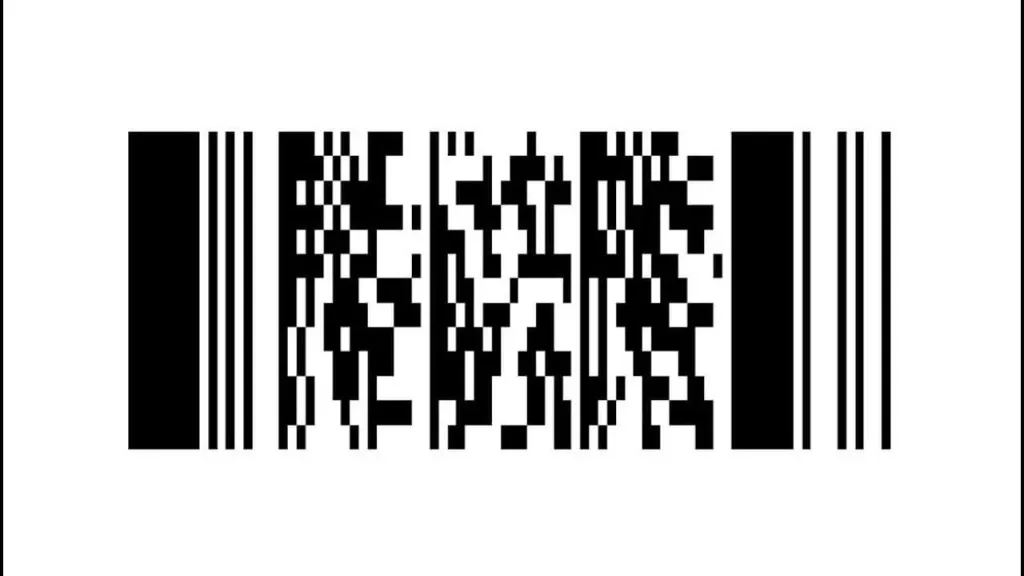PDF 417 is a grouped barcode used to encode large amounts of information. The word ”barcode” is a term that is widely used and familiar to most people. It contains a certain amount of information and is used to recognise an item both physically and online. But, within this, there are two groups: linear (or one-dimensional) and two-dimensional. In this article we will talk about the latter type, specifically the PDF 417 format, which was developed in 1991 by the company Symbol and later bought by Motorola in 2007.
What is a PDF 417?
PDF 417 is currently regulated by ISO/IEC 15438:2006 – Information technology. Automatic identification and data capture techniques.
It is a grouped barcode that can be used to encode large amounts of information in different codes.
Each individual pattern consists of exactly 4 bars and 4 spaces, each of which has a length of 17 units, hence the number 417. The PDF 417 can encode up to 1,800 ASCII characters per barcode or up to 1,100 binary characters per symbol. Once the width of the symbol has been set, its height depends on the information embedded. If the amount of information to be stored is larger than can be stored in one symbol, several symbols can be linked together until the required storage is complete
Each symbol consists of 3 to 90 rows, each row being a small linear barcode. Each row contains:
- A quiet zone. This is the minimum white space required before the barcode begins.
- A Start Pattern that identifies the format as PDF 417.
- A Left Row Indicator containing information about the row (such as row number and error correction level, which we will see later).
- 1 to 30 code words, which are groups of bars and spaces representing one or more numbers, letters or other symbols.
- A “right row” code word with more information about the row.
- A stop pattern.
- Another quiet area.
All rows are the same width and each row has the same number of code words
A single PDF 417 symbol can contain up to 1850 alphanumeric characters, 2710 digits or 1108 bytes. Due to internal data compression algorithms, the data capacity will depend on the structuring of the information being encoded. The maximum capacity depends on the available printing space and the resolution of the printer.
In general, the PDF 417 standard states that text should be encoded according to the CP437 code page
A built-in error correction method based on Reed-Solomon algorithms is provided, which can be set by the user between level 0 (error detection) and level 8 (maximum error correction). Recommended levels are between 2 and 5, but the optimum value will depend on the amount of data, print quality of the PDF 417 symbol and decoding capability.
PDF417 supports the “Structured Append” function, in which case the symbology is called PDF417 Macro or PDF Macro. Theoretically, up to 99999 symbols can be appended within a single document.
Main uses
It is mainly used in the logistics sector (especially in the automotive industry), transport systems (e.g. shipping labels), for user identification (driving licences, passports, ID cards, digital signatures) and in document management.
PDF 417 has become popular in the transportation industry and is frequently used by FedEx. It was also chosen to print postage for the United States Postal Service and is commonly used for airline boarding passes.
It is used for parts control in industry, lotteries, on patient wristbands and for registration of potential customers at trade fairs.
How does it differ from other types of codes?
Viafirma allows the user to configure the signature seal, choosing between different symbols for the digital signature on the server (the one that is done without the need for user intervention). This will be done with a digital certificate stored in the software.
The following is a comparison of the different types of barcodes available in our solutions:
- Barcode 128: 1D with high data density. Very wide distribution in all areas. It has 3 sets of characters that change automatically.
- QR Code: 2D to encode text or bulk data in a single code. Often used for Mobile-Tagging with mobile phones.
- QR Barcode 182: Both electronic symbols on the document
- Reduced QR Code: Same shape as the second but slightly smaller.

PDF 417: the solution to speed up times and improve the quality of the data collected
For verification scanners, the use of this barcode format is important because it is the standard for most state-issued driving licences and ID cards. Many banks and credit unions are using such tools to capture images of customer ID documents at the teller window, so the ability to identify and read them correctly is critical to obtaining and validating data.
In fact, with our Viafirma Documents solution, something similar happens. It includes the possibility of scanning this type of symbols when writing a new signature request, so that the form fields where we fill in the signatory’s data will be completed automatically. This functionality will speed up the time taken to complete the containers and improve the quality of the data collected. A clear example of use is the Colombian ID card, which includes this code on the back with information about the citizen that can be automatically transferred to your form.
